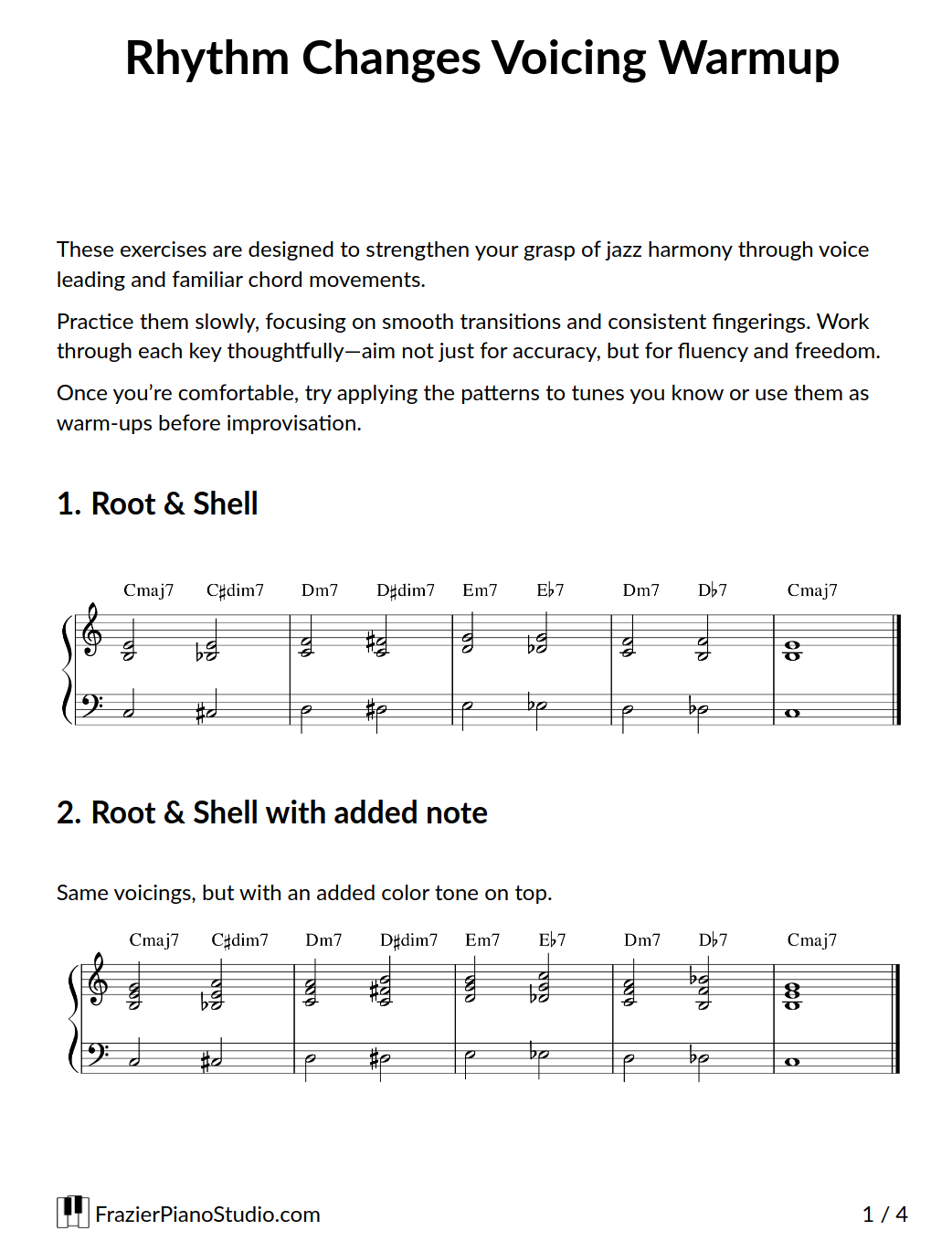Rhythm Changes
Course Lessons
Start CourseGeorge Gershwin’s “I Got Rhythm” gave birth to one of the most important forms in jazz—and dozens of iconic tunes.
I've been wanting to do this tune for a while. It has a lot to offer.
We'll build up learning this tune similarly to how I cover the blues and Autumn Leaves. We'll start by really learning the shell movement and then build from there.
I also provide a couple written-out exercises to work out some of the voice leading.
Guided Listenings #
Then we’ll go deep into three tunes:
- Duke Ellington’s “Cotton Tail”
- Thelonious Monk’s “Rhythm-a-Ning”
- Charlie Parker’s “Crazeology”
Voicing Warmup Guide #
This course includes a downloadable Rhythm Changes Voicing Warmup.

Course Objectives #
- Understand the 32-bar AABA form that underlies Rhythm Changes
- Learn to comp using shell voicings, Bud Powell voicings, and substitutions
- Compare harmonic approaches across three recordings (Ellington, Monk, Parker)
- Build soloing tools using pentatonic ideas, blues licks, and bebop voice leading
— or —
Not ready to subscribe? Try our free intro course.